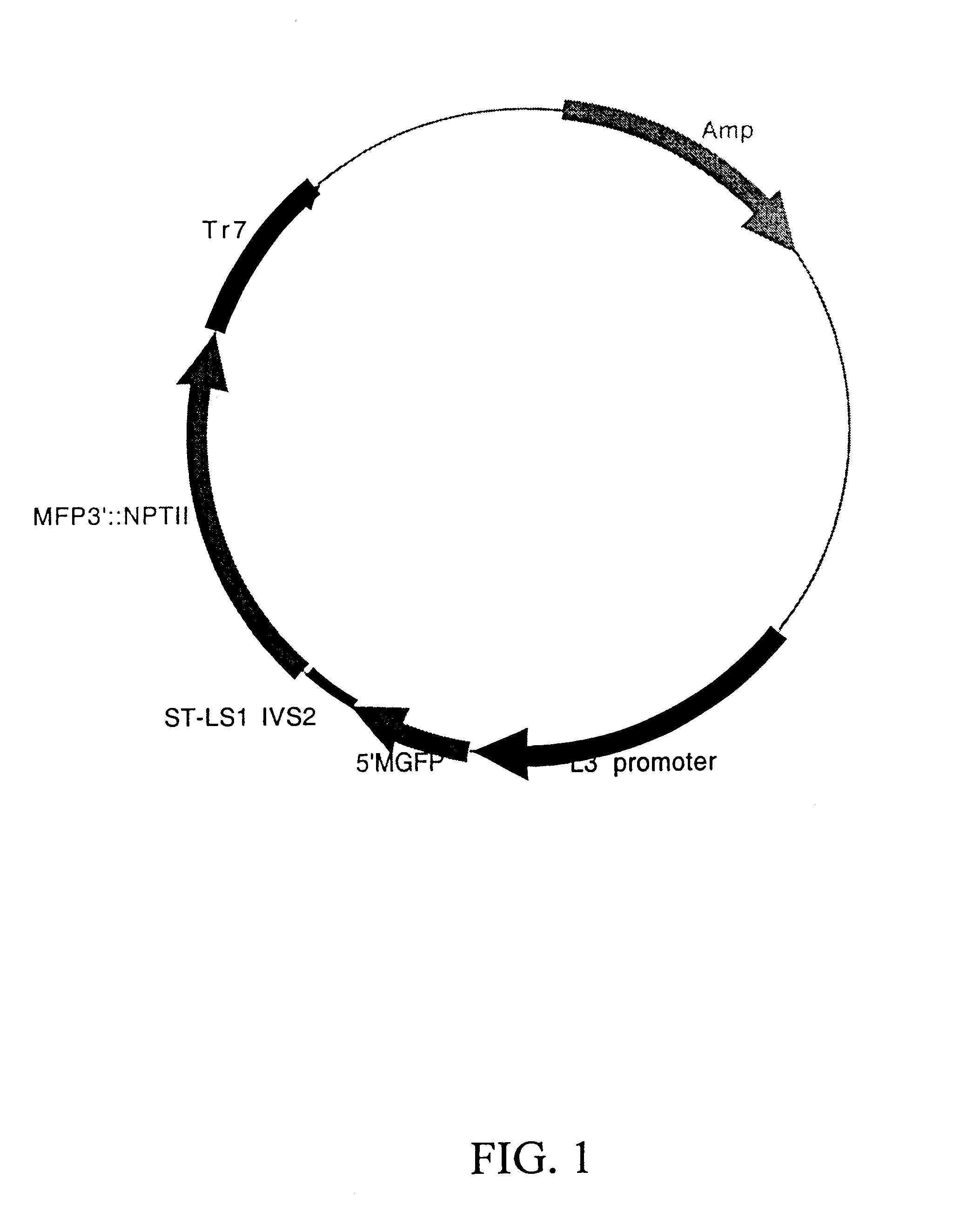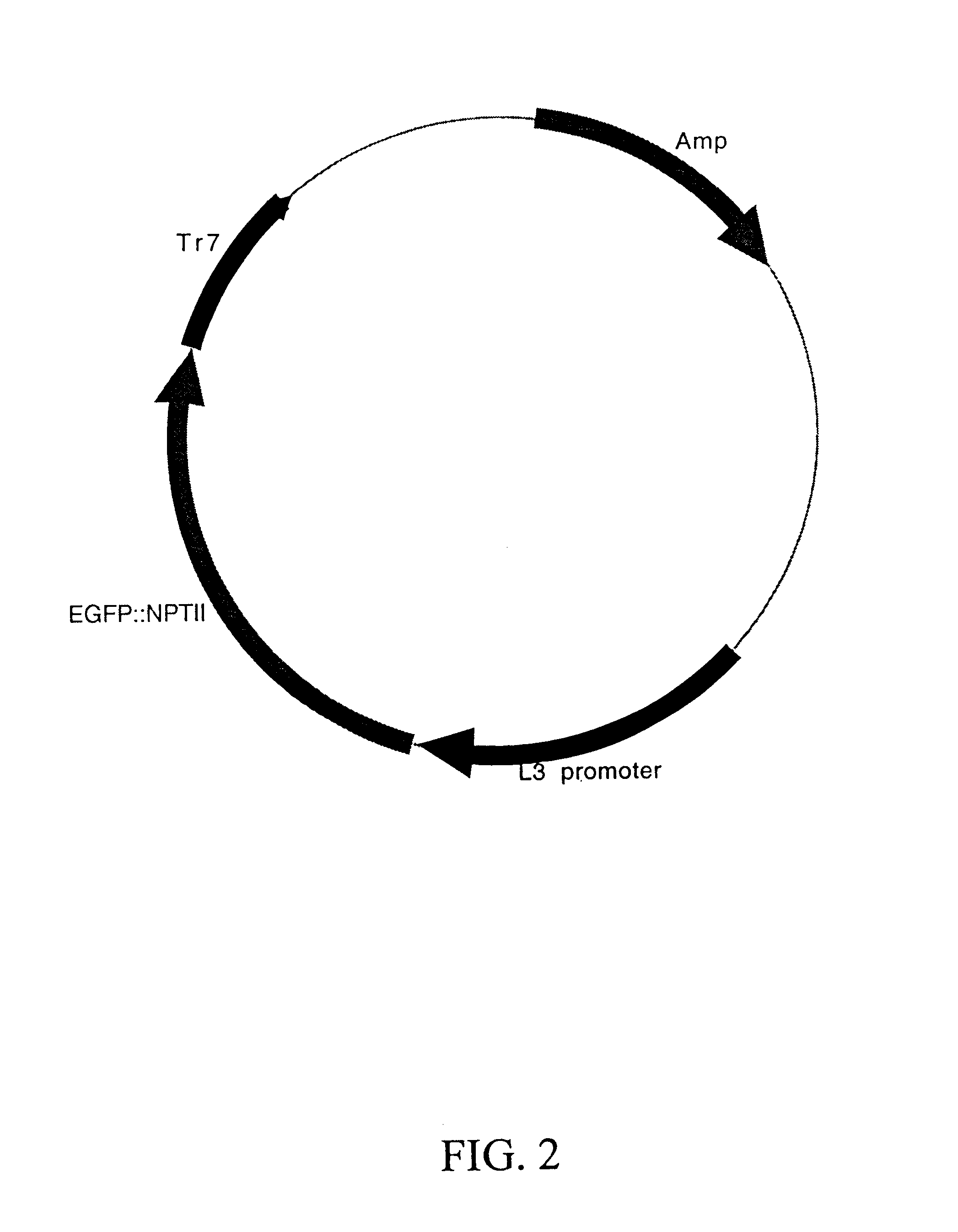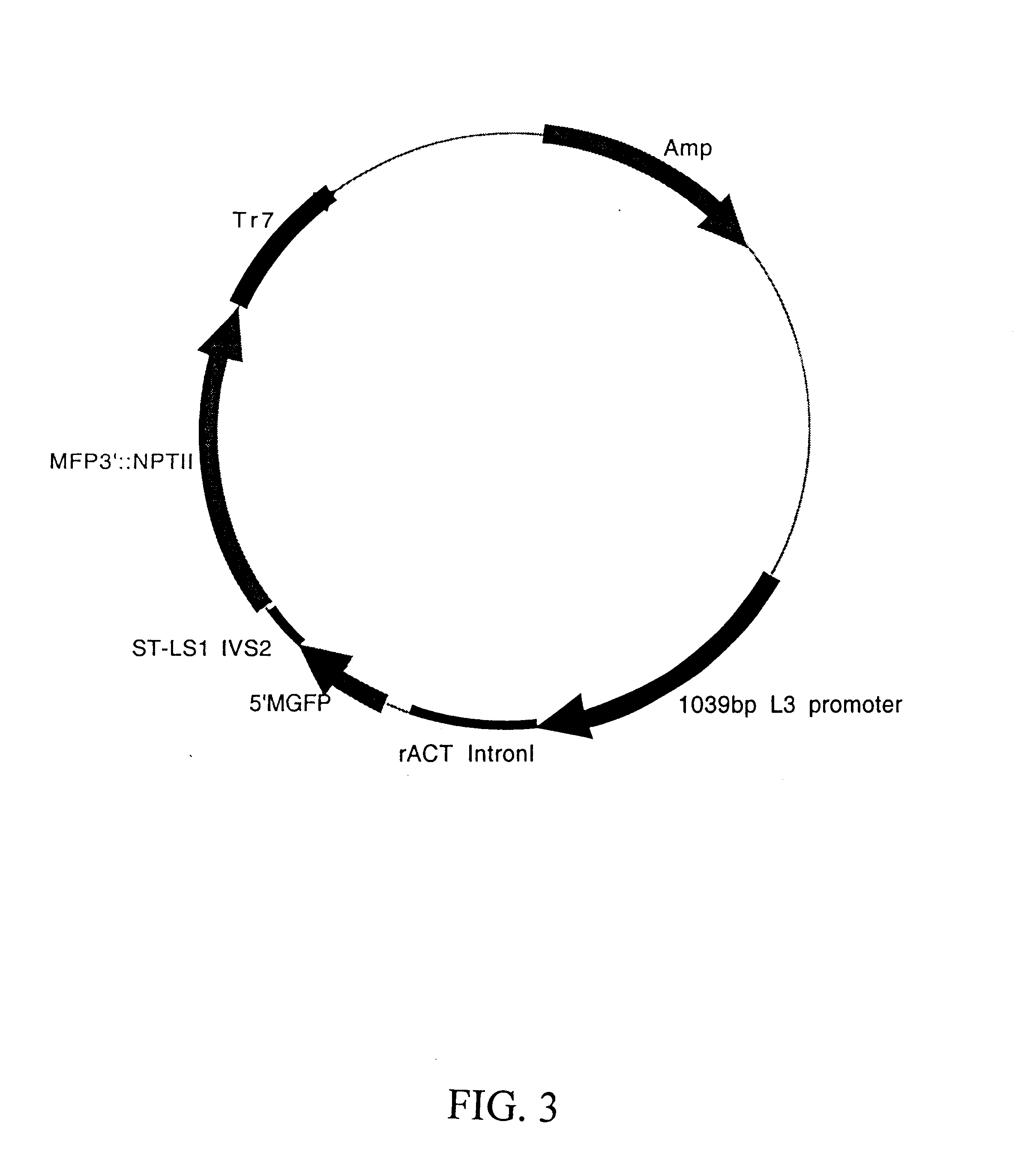Maize L3 oleosin promoter
a technology of oleosin promoter and maize l3, which is applied in the field of agricultural biotechnology, can solve the problems of significant hindrance to breeders, failure to identify a method of non-destructively identifying transgenic seeds, and difficulty in recovering live transformed cells
- Summary
- Abstract
- Description
- Claims
- Application Information
AI Technical Summary
Problems solved by technology
Method used
Image
Examples
example 2
Isolation of the L3 Promoter
Plants from the inbred maize line Mo17 were propagated in the greenhouse and grown for several weeks for the isolation of genomic DNA. Genomic DNA was prepared from 2-3 week old leaf material according to the following protocol. Frozen leaf tissue (2 grams fresh weight) was ground into a fine powder with a glass rod under liquid nitrogen. Powdered tissue was mixed thoroughly with 8 ml of extraction buffer (100 mM Tris, pH 8.0; 50 mM EDTA; 1% v / v SDS; 500 mM NaCl), pre-warmed to 60.degree. C., followed by a 45 minute incubation at 60.degree. C. The sample was then mixed with 2.5 ml of ice-cold 5 M potassium acetate and then incubated on ice for 20 minutes. Protein aggregates were removed by centrifugation at 3750 rpm for 20 minutes. The supernatant was poured through a layer of Miracloth and the DNA was precipitated by mixing with 5 ml of isopropyl alcohol. Precipitated DNA was collected by centrifugation at 3750 rpm for 15 minutes. The supernatant was pou...
example 3
Preparation of L3 / GUS Constructs
The preparation of the vector pDPG778 first involved construction of pDPG684, which contains a multiple cloning site immediately upstream of the GUS coding sequence. pDPG684 was constructed as follows: pDPG126 (35S / GUS / Tr7) was cleaved with EcoRI and BamHI in order to isolate a 2370 bp fragment containing the GUS coding sequence and Tr7 terminator. A fragment of the expected size was observed in agarose gel electrophoresis, and this was excised from the gel and purified using the Elu-Quik Kit (Schleicher and Schuell, Keene, N.H.). The cohesive ends of this fragment were then filled in using Klenow enzyme (DNA polymerase I, Boehringer Mannheim, Indianapolis, Ind.). The vector pBSK(-) (Stratagene, LaJolla, Calif.) was cleaved with SalI and the cohesive ends filled in the same manner followed by treatment with alkaline phosphatase to prevent self ligation. These two fragments were then ligated using the Rapid Ligation Kit (Boehringer Mannheim, Indianapol...
example 4
Bacterial Expression of GFP:NPTII Constructs
The plasmid DV 127 (SEQ ID NO:1), prepared as described in Example 1, was cleaved with EcoRV and HindIII to release a fragment of 1736 bp containing the MGFP::NPTII sequence. The fragment was isolated by gel electrophoresis, band excision, and DNA elution by using the components of the Genelute kit (Supelco; Bellafonte, Pa.) according to the manufacturers directions. This fragment was inserted into the plasmid pBSK (Stratagene, La Jolla, Calif.) which had been cleaved with EcoRV and HindIII using the components of the Rapid Ligation Kit (Boehringer Mannheim, Indianapolis, Ind.). This placed the MGFP::NPTII fusion protein in frame with the beta-galactosidase coding sequence resident in the pBSK plasmid under the control of the E. coli lac-i promoter. This plasmid was designated pBSK / MGFP::NPTII (FIG. 6).
Similarly, pDPG899 (DV134; SEQ ID NO:6) was cleaved with NotI and HindIII to release a 1621 bp fragment containing the EGFP::NPTII. This fr...
PUM
| Property | Measurement | Unit |
|---|---|---|
| Length | aaaaa | aaaaa |
| Time | aaaaa | aaaaa |
| Time | aaaaa | aaaaa |
Abstract
Description
Claims
Application Information
 Login to View More
Login to View More - R&D
- Intellectual Property
- Life Sciences
- Materials
- Tech Scout
- Unparalleled Data Quality
- Higher Quality Content
- 60% Fewer Hallucinations
Browse by: Latest US Patents, China's latest patents, Technical Efficacy Thesaurus, Application Domain, Technology Topic, Popular Technical Reports.
© 2025 PatSnap. All rights reserved.Legal|Privacy policy|Modern Slavery Act Transparency Statement|Sitemap|About US| Contact US: help@patsnap.com



